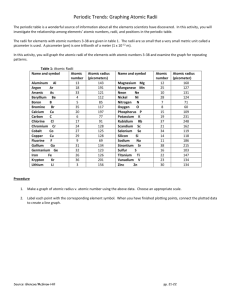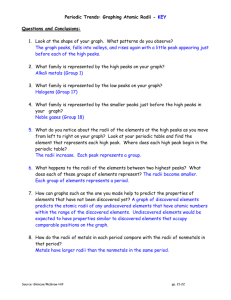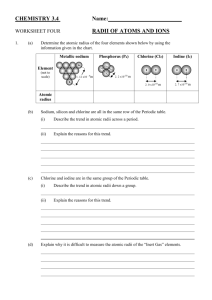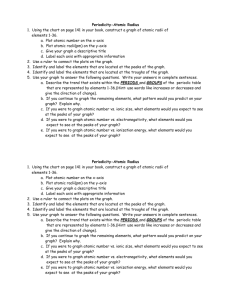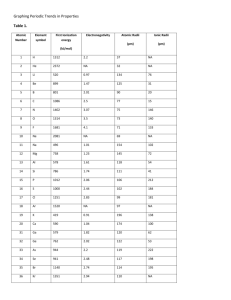Relationship Among Elements Lab
advertisement
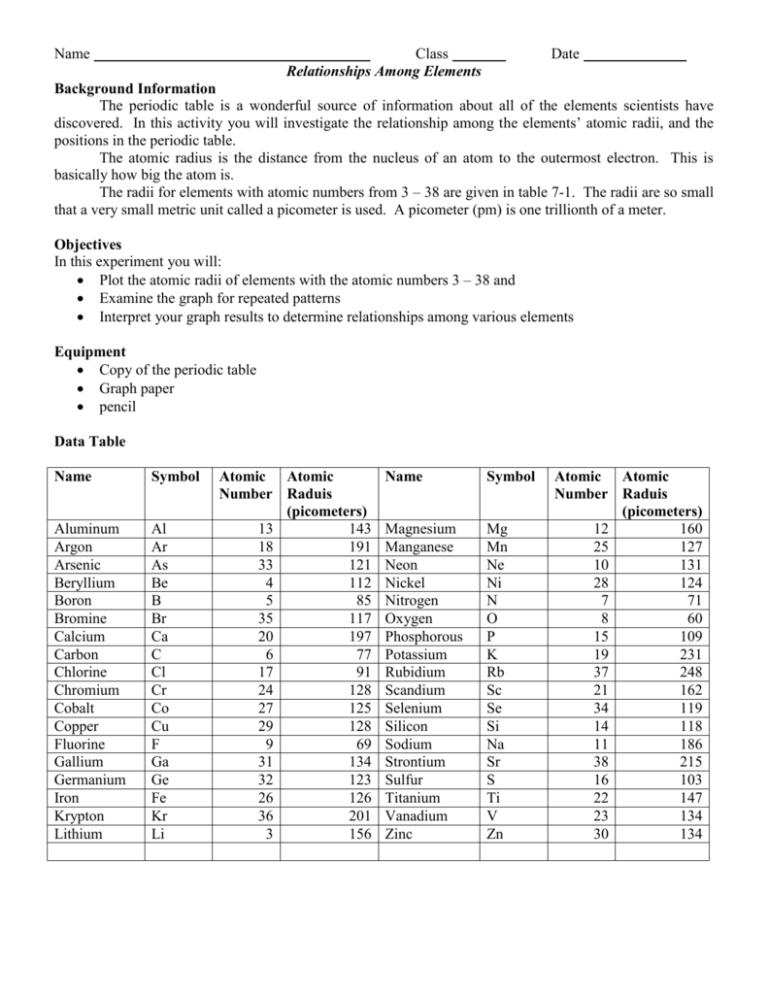
Name Class Relationships Among Elements Date Background Information The periodic table is a wonderful source of information about all of the elements scientists have discovered. In this activity you will investigate the relationship among the elements’ atomic radii, and the positions in the periodic table. The atomic radius is the distance from the nucleus of an atom to the outermost electron. This is basically how big the atom is. The radii for elements with atomic numbers from 3 – 38 are given in table 7-1. The radii are so small that a very small metric unit called a picometer is used. A picometer (pm) is one trillionth of a meter. Objectives In this experiment you will: Plot the atomic radii of elements with the atomic numbers 3 – 38 and Examine the graph for repeated patterns Interpret your graph results to determine relationships among various elements Equipment Copy of the periodic table Graph paper pencil Data Table Name Symbol Aluminum Argon Arsenic Beryllium Boron Bromine Calcium Carbon Chlorine Chromium Cobalt Copper Fluorine Gallium Germanium Iron Krypton Lithium Al Ar As Be B Br Ca C Cl Cr Co Cu F Ga Ge Fe Kr Li Atomic Atomic Number Raduis (picometers) 13 143 18 191 33 121 4 112 5 85 35 117 20 197 6 77 17 91 24 128 27 125 29 128 9 69 31 134 32 123 26 126 36 201 3 156 Name Symbol Magnesium Manganese Neon Nickel Nitrogen Oxygen Phosphorous Potassium Rubidium Scandium Selenium Silicon Sodium Strontium Sulfur Titanium Vanadium Zinc Mg Mn Ne Ni N O P K Rb Sc Se Si Na Sr S Ti V Zn Atomic Atomic Number Raduis (picometers) 12 160 25 127 10 131 28 124 7 71 8 60 15 109 19 231 37 248 21 162 34 119 14 118 11 186 38 215 16 103 22 147 23 134 30 134 Conclusion Questions 1. Look at the shape of your graph. What pattern do you observe? 2. What family is represented by the high peaks in your graph? 3. What family is represented by the low peaks in your graph? 4. What family is represented by the smaller peaks just before the high peaks in your graph? 5. What do you notice about the radii of the elements at the high peaks as you move from left to right? Look at your periodic table and find the element that represents each high peak. What does each high peak begin in the periodic table? 6. What happens to the radii of the elements between the two highest peaks? What does each of these groups of elements represent? 7. How can a graph such as the one you made help to predict the properties of elements that have not yet been discovered? 8. How do the radii of the metals in each period compare with the radii of the nonmetals in that period?
